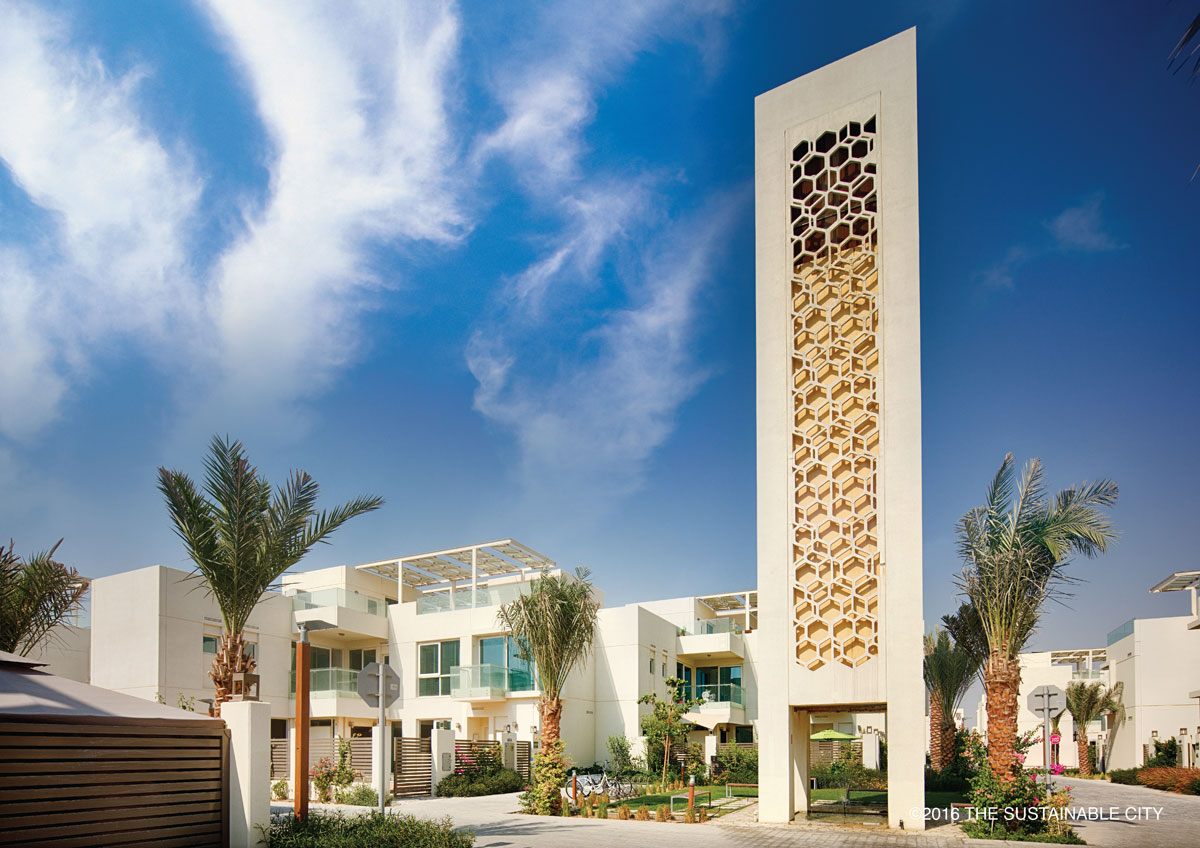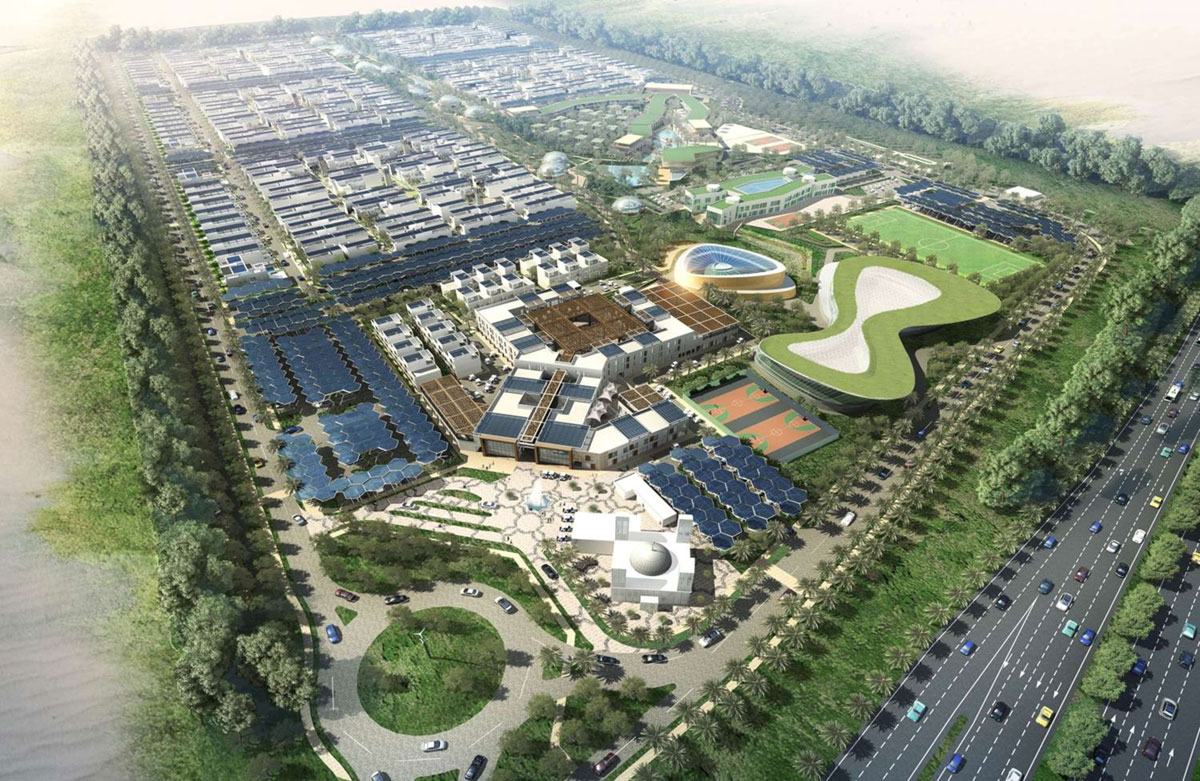“When we took the land in Dubailand and talked about our plans to launch a sustainable project, many thought we were just bluffing. Today, when people come and see our project they are simply amazed,” says Faris Saeed.
Ironically, the new city is the result of a failed development called The Lagoons, which had been planned for Dubai Creek. When the global financial crisis hit in 2008, many of the multi-billion-dollar real estate developments across Dubai were put on the back burner. When The Lagoons stalled, Saeed, CEO and co-founder of Diamond Developers, agreed to swap his three plots in the development for a 5 million sq ft block of land in Dubailand, then a remote area of the desert.
Today that desert strip has been transformed into a “green city” where 250 families live and experience a sustainable lifestyle. Their homes are run by solar power; their unused water is recycled, and residents travel within the city only by walking or in electric cars. Saeed, a civil engineering graduate from Yamouk University in Jordan, moved to Dubai to establish a maintenance and interior design company in 1995. It was in 1999 that he and his university friend Wassim Adlouni, an architect, set up Diamond Developers.

The company thrived during the emirate’s real estate boom. Between 2000 and 2008, they built six towers with over 1,000 apartments in Dubai Marina, 150 townhouses in Jumeirah Village and four commercial buildings in Arjan. Then came the financial crisis that saw Dubai property prices crash by up to 60 percent. Diamond Developers’ expansion plans were put on hold, but Saeed and Adlouni remained confident the market would eventually bounce back. The economic slowdown, in fact, gave them the opportunity to revisit their development plans.
Despite being part of the conventional construction industry, they firmly believe that the breakneck speed of development in the emirate has been detrimental to the environment. “Dubai’s per capita carbon footprint and water consumption are among the highest in the world. Many housing units here have poor insulation and are overly exposed to the sun, which results in high energy demand for air-conditioning,” Saeed says.
The concept was influenced by a trip in May 2010 when the partners visited the University of California, Davis (UC Davis) and learned about a new sustainable community — West Village — which was being built as a “net zero energy development”. Back in Dubai, the engineer-architect team began designing a sustainable city that was financially feasible without forgoing quality and profitability — not an easy task.

Construction on the $354m The Sustainable City began in 2013. The city is surrounded by a 30-metre-wide green buffer zone of 2,500 trees, which Saeed says reduces air and noise pollution. The first phase is complete and includes 500 residential villas, 11 biodome greenhouses running the length of the central green spine, 3,000-square-metres of urban farming and a 15,000-square-metres mixed-use area including offices and retail.
“The first phase is ready. We expect residential occupancy levels of between 80-90 percent by year-end,” says Saeed, who will move from his temporary office to the commercial building in the next few months.
The second phase will include Hotel Indigo (the first net-zero energy hotel in the Middle East), an environmentally-friendly school and an innovation centre that claims to be the first negative carbon building. Construction is due to begin in the first quarter of 2017, with the entire city expected to open by the end of 2018.
Even the construction phase will contribute positively to the environment. The Sustainable City promises to reuse construction waste rather than dump it. “We will be using most of our construction waste from the first phase in the hotel. In every bend, you will find a recycled material done in a beautiful way. Wooden waste will be used in the gardens or corridors, while the steel waste will be used to manufacture tables and green walls,” Saeed admits.
“The waste from tiles will be used for building jogging and walking tracks, while the green waste will be used for agriculture. Within our project, we will try to use as much recycled material as possible.”

The innovation centre will be self-sufficient in both water and energy, generating about 140 percent of its operating energy, offsetting emissions released during its construction and operational phase.
“Our biggest challenge during development of the centre will be to select the appropriate building material with the lowest carbon footprint and maintain the lowest possible cooling requirements to match with the lowest energy footprint. Increasing daylight penetration and ensuring a healthy indoor air quality are challenges.”
Though the general perception among industry players is that sustainable developments are costlier than conventional buildings, Saeed disagrees. “This is a myth, and we managed to prove it with The Sustainable City — the cost can be just as any other product. Sustainability should not come at a premium,” he says, revealing plans to build “affordable, sustainable apartments”.

